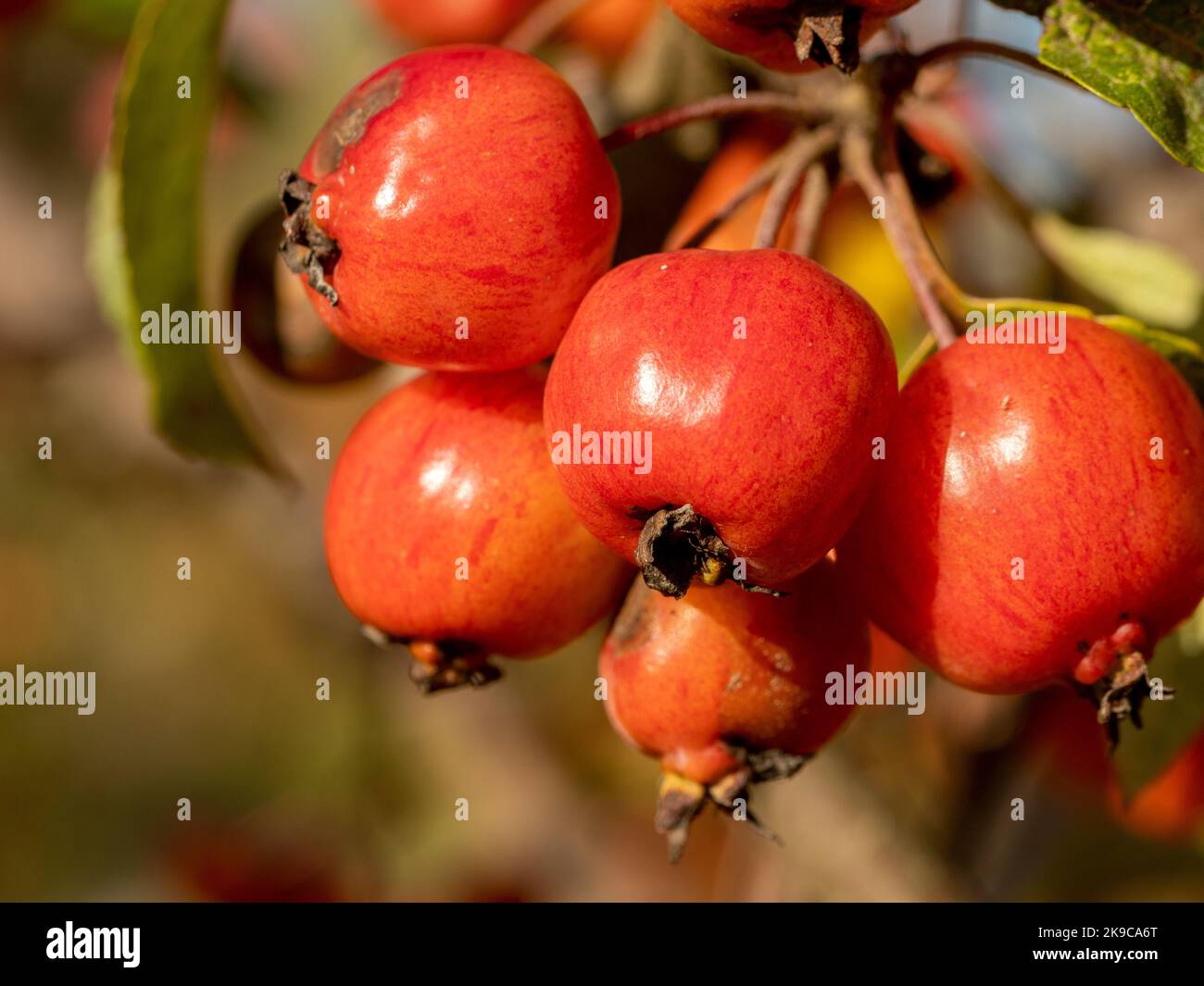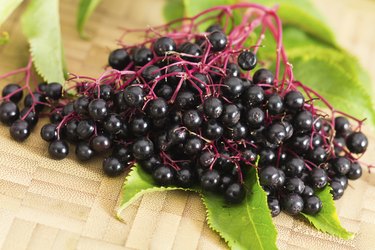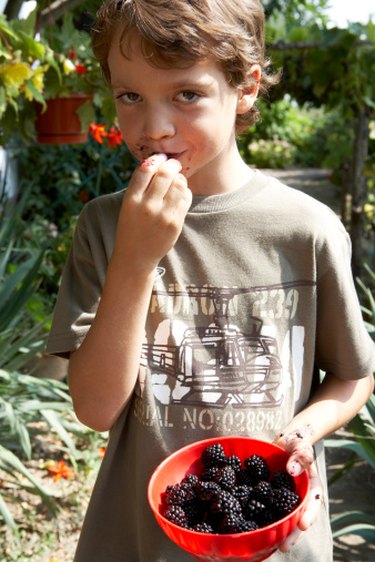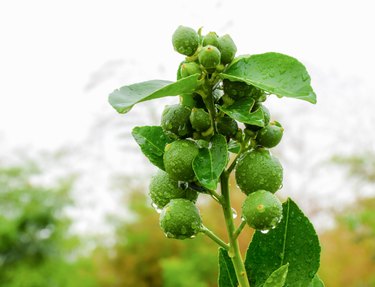Crabapple trees (Malus spp. ) create a showy display throughout much of the year. In the spring, they explode with fragrant blooms that cover the trees for up to two weeks. The leaves change color in late summer and fall, and the trees produce lots of small crabapples that can be picked for food or left for wildlife to enjoy. If you harvest the fruit, proper timing helps you get the most from your crabapple tree.
Crabapples are a tasty and versatile autumn fruit, but it can be tricky to know exactly when they’re ripe and ready for picking. Follow this guide to identify the signs of ripe crabapples plus tips for harvesting and enjoying this tart backyard treat.
What are Crabapples?
Crabapples are small sour apples that grow on crabapple trees. There are over 800 cultivated varieties, ranging from cherry-sized to about 2 inches wide. They come in colors like red yellow, orange, and green.
Unlike regular apples, most crabapples are too tart to eat raw. But their eye-catching look and sharp flavor make them ideal for cooking, baking, canning, and crafts. They contain pectin, making them excellent for jellies, preserves, and sauces.
When is Crabapple Season?
Crabapples ripen in the fall, around the same time as regular apples Their peak season ranges from August through October depending on your region’s climate. Some ripen as early as July while others hang on trees until November.
Check your local crabapple variety to know when fruit typically appears in your area. Once the season hits, keep an eye on trees weekly to catch crabapples at their prime.
How to Tell When Crabapples Are Ripe
Ripe crabapples should meet these criteria:
-
Color: Ripe crabapples will be their mature color, like red, orange, yellow, or mottled. Greenish apples are still unripe.
-
Firmness: Mature crabapples feel firm but yield slightly to gentle pressure, like a ripe peach. Underripe ones are hard as a rock.
-
Seeds: Slice a few open. Ripe crabapples have brown or tan seeds. If seeds are white, pink, or green, they need more time.
-
Taste: Try a tiny bite of the flesh. Ripe crabapples should taste moderately tart, not completely sour or flavorless.
No single factor is definitive on its own. Use a combination of color, firmness, seeds, and taste to determine ripeness.
When to Pick Crabapples
-
Harvest crabapples once multiple fruits on a tree meet the above ripeness criteria.
-
Leave any that are still hard, green, or too high to reach. Keep checking back every few days as more will ripen.
-
Use a ladder and gently twist ripe crabapples to separate them from branches. Take care not to damage the tree.
-
For the highest pectin content, pick crabapples while they are slightly underripe. But for eating fresh, wait until fully ripe.
-
Handle the fruits carefully to avoid bruising. Sort out any that are damaged, mushy, or moldy.
Storing Freshly Picked Crabapples
Enjoy crabapples soon after picking for best flavor and texture. Properly stored, ripe crabapples keep for 2-3 weeks.
-
Place unwashed crabapples loosely in a single layer in a cool, dry spot. Don’t stack them.
-
Avoid storing crabapples in sealed plastic bags, which trap moisture and accelerate spoilage. A paper bag works better.
-
Refrigeration can extend freshness slightly, but chilling also softens texture. Best to refrigerate only prepped crabapples.
-
Cook or preserve crabapples within 1-2 weeks. Discard any with mold or mushy spots.
Delicious Ways to Use Ripe Crabapples
Put your ripe backyard crabapple haul to good use:
-
Make crabapple jelly, jam, preserves, butter, chutney, relish, or sauce. The high pectin gives an excellent set.
-
Bake crabapples into pies, tarts, muffins, breads, pancakes, crisps, and other desserts. Combine with sweeter fruit.
-
Craft gorgeous crabapple wreaths, centerpieces, and garlands. The mini fruits make cheerful decorations.
-
Infuse crabapple vinegar or liqueur. Use in salad dressings, marinades, and cocktails.
-
Press crabapple cider for a tangy, refreshing autumn beverage. Chill and enjoy straight or mulled.
Help! How Can I Use Unripe Crabapples?
Don’t despair if you misjudge and pick crabapples that are still too hard or sour. Just use these tricks:
-
Make crabapple pectin. Underripe crabapples are loaded with natural pectin. Simmer and strain to extract it.
-
Cook down into sauce. The lengthy cooking softens texture and concentrates flavor. Sweeten to taste.
-
Infuse vinegars or alcohols. The longer infusion time helps draw out maximum crabapple essence.
-
Craft decorative items. Even rock-hard green crabapples look pretty in floral displays or centerpieces.
Enjoying Your Crabapple Bounty
With their short harvest season, crabapples are a fleeting fall fruit. Keep an eye out for signs of ripeness as summer winds down. Time your picking carefully and handle the fruits with care. Then get ready to capture the crabapple’s signature tangy flavor in jams, baked goods, and more. Letting the tart little apples shine makes a great way to usher in autumn.

Crabapple Tree Fruit Basics
Video of the Day
Crabapples and apples are essentially the same fruit; the only real distinction is the size. Crabapples are 2 inches or less in diameter; apples are larger than 2 inches. Crabapples typically grow as perennials in U. S. plants can grow in USDA hardiness zones 4 through 8, but some, like Malus Rescue, can handle zone 1 conditions.



Video of the Day
Most crabapples arent as sweet as apples but instead have a tart, tangy flavor that many people enjoy. There are many things to do with crabapples. People often choose different crabapple uses and recipes, like making juice or jelly from them or storing them as jams or pickles. Knowing when crabapples are ripe helps those recipes turn out better with fruit that tastes better.
Cut some crabapples in half and look at the seeds to see if they are ready. A ripe crabapple normally has dark brown seeds. If its not ripe, the seeds are lighter in color and may look beige, greenish or white. Sometimes the seeds may stay light, so it’s best to use more than one way to tell if crabapple tree fruit is ready to eat.
Look for Coloring When Ripe
Different types of crab apples are different colors at maturity. You can tell if an apple is ripe or almost ripe by how bright the color is if you know what kind of apple tree it is. Colors can range from various shades of red to yellow and green.



Some, like the Camelot crabapple (Malus Camzam), are different shades of red, while others, like the Malus Trailman, have green spots on them. Both of these cultivars grow best in zones 4-8. Some may even be solid green, like Malus Norhey, zones 1 through 8. Some people choose to wait and see what color their crabapples turn to figure out what kind they are. There are at least 1,000 different kinds of crabapples.
DAY 258 – How To Tell Crab Apples Are Ripe & Crab Apple Jelly
How do you know if crab apples are ripe?
Different types of crab apples are different colors at maturity. If you know the apple type of the tree you’re harvesting, you can tell when they’re ripe or nearly ripe by the intensity of the color. Colors can range from various shades of red to yellow and green .
How do you know if an avocado is ripe?
Unripe avocado can be eaten but it is no recommended as the texture and flavor are not pleasant. To make sure an avocado is ripe, you should press lightly on it with your fingers. If the texture is soft and creamy, it means that it is ripe.
What does a ripe Crabapple taste like?
Ripe crabapples are typically a mix of tart and sweet. If they aren’t ripe yet, they taste bitter. Testing an apple that appears ripe based on color for firmness and flavor can help you decide if they’re ready to harvest.
How do you know if a crabapple tree is ready to harvest?
Harvesting crabapple tree fruit at the right time ensures the fruit has an appealing texture and flavor. The color of the crabapple seeds, color of the skin, firmness of the fruit and taste of the apples helps determine if they’re ready to harvest or need more growing time on the tree.
